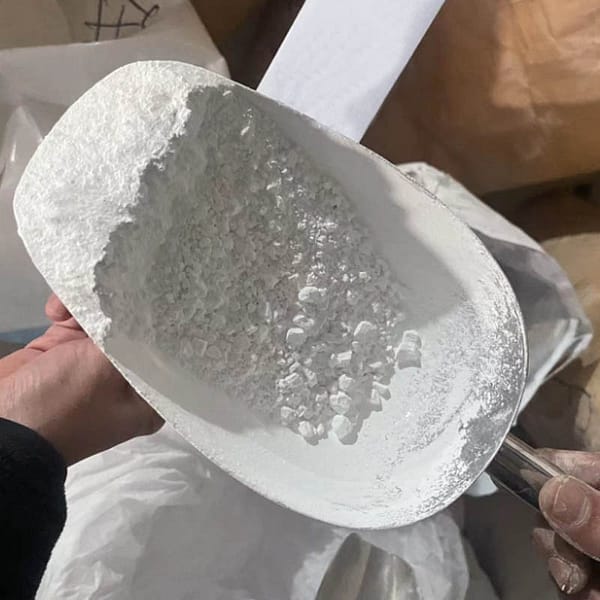Titanium dioxide (also known as TiO2, white titanium, or Pigment White 6 – PW6)) is a major component in many industries. It’s particularly popular in rubber, paints plastics, and paper. The versatile substance is known for its dazzling white color. It plays a crucial role in the transformation process of raw materials into vivid, final products. Let’s delve into the wonders of titanium dioxide, exploring its applications, production processes and the influence it exerts on many industries.
The Canvas of Titanium Dioxide: A Palette of Possibilities
Titanium dioxide stands as an essential component in the creation of many items, contributing to the visual appeal and functionality of objects we see every day. As Pigment White 6, it is a key player in the development of paints, providing an incredibly opaque and brilliant white hue that boosts the radiance and coverage of industrial and artistic uses as well.

Titan dioxide is employed in the plastics industry to provide the color of the product and also acts as a UV stabiliser, protecting against harmful UV radiation. This dual function makes it an important part of a variety of plastic products including packaging materials, to sturdy outdoor products.
The Manufacturing Alchemy of Titanium Dioxide Production Processes
The manufacturing of titanium dioxide is a complex process, with two predominant methods in the forefront that are the sulfuric acid method and the chlorination method. Each method is unique and has different applications. This explains the versatility of titanium dioxide in various industries.
The Sulfuric Acid Method: This method involves the reaction minerals that contain sulfuric acid with titanium which results in the formation of a titanium sulfate-based solution. This solution is then hydrolyzed in order to make hydrated Titanium dioxide. After calcination, the final product is a fine white powder that is utilized in a variety of industries, including paint and paper.
The Method of Chlorination: In contrast, the method of chlorination utilizes chlorine gas to react with ores that contain titanium, creating titanium tetrachloride. After a series if chemical reactions, the titanium tetrachloride will be converted into pure titanium oxide. This method is prominent in the production of titanium dioxide for the plastics and rubber industries.
Titanium Dioxide Applications: Art and Science
Titanium Dioxide is a pigment with a stunning shine across every industry. Titanium dioxide is a sought-after choice among homeowners, artists and industrial customers alike because of its capacity to produce brilliant white colors. The brightness it adds to the canvas is not only visual but also functional, improving the durability of painted surfaces.
Shape Plastics with Radiance. In the world of plastics, titanium dioxide has a double purpose. Apart from serving as a white pigment, titanium dioxide is a UV stabilizer, providing vital protection against the damaging effect of sunlight. It is therefore an essential element of the process used to make outdoor plastics since it is a guarantee that they will maintain their structural integrity and aesthetic appeal as they age.
Titan dioxide is utilized in the paper industry to enhance the whiteness of the paper as well as its opacity. The addition of titanium dioxide improves the clarity and brightness of printed material. Titanium dioxide is employed for the production of paper for a variety of aesthetic purposes. It also plays a crucial role in enhancing overall quality.
Rubber Resilience and UV Resistance: The industry gets benefit from the UV resistance that titanium dioxide offers. Titanium dioxide is used in the manufacture of rubber products exposed to UV radiation, and this ensures the durability and performance of items made of rubber.
Titanium Dioxide: Beyond Pigment and its Invisible Impact
Titanium dioxide is a highly visible pigment. But its effect goes beyond color. The compound’s ability to enhance the durability, resilience, and long-term performance of materials in diverse industries makes it a nebulous but essential contribution to the quality and performance of final products.
In conclusion, titanium dioxide emerges as a material of immense significance as it seamlessly blends into a variety of industries. In the form of Pigment White 6, it is a brilliant paint that can be applied to canvas which are both industrial and artistic. The two processes of sulfuric acid and chlorination uncover the alchemy of the process, providing that it can be used in a variety of ways. Titanium dioxide is an excellent illustration of the harmonious blending between science and art that occurs in manufacturing. It can be utilized to improve the appearance of paints, protect plastics from UV rays, or improve the brightness of paper. Its dazzling light shines through our daily lives and is the basis for a range of products that have enduring shine.
